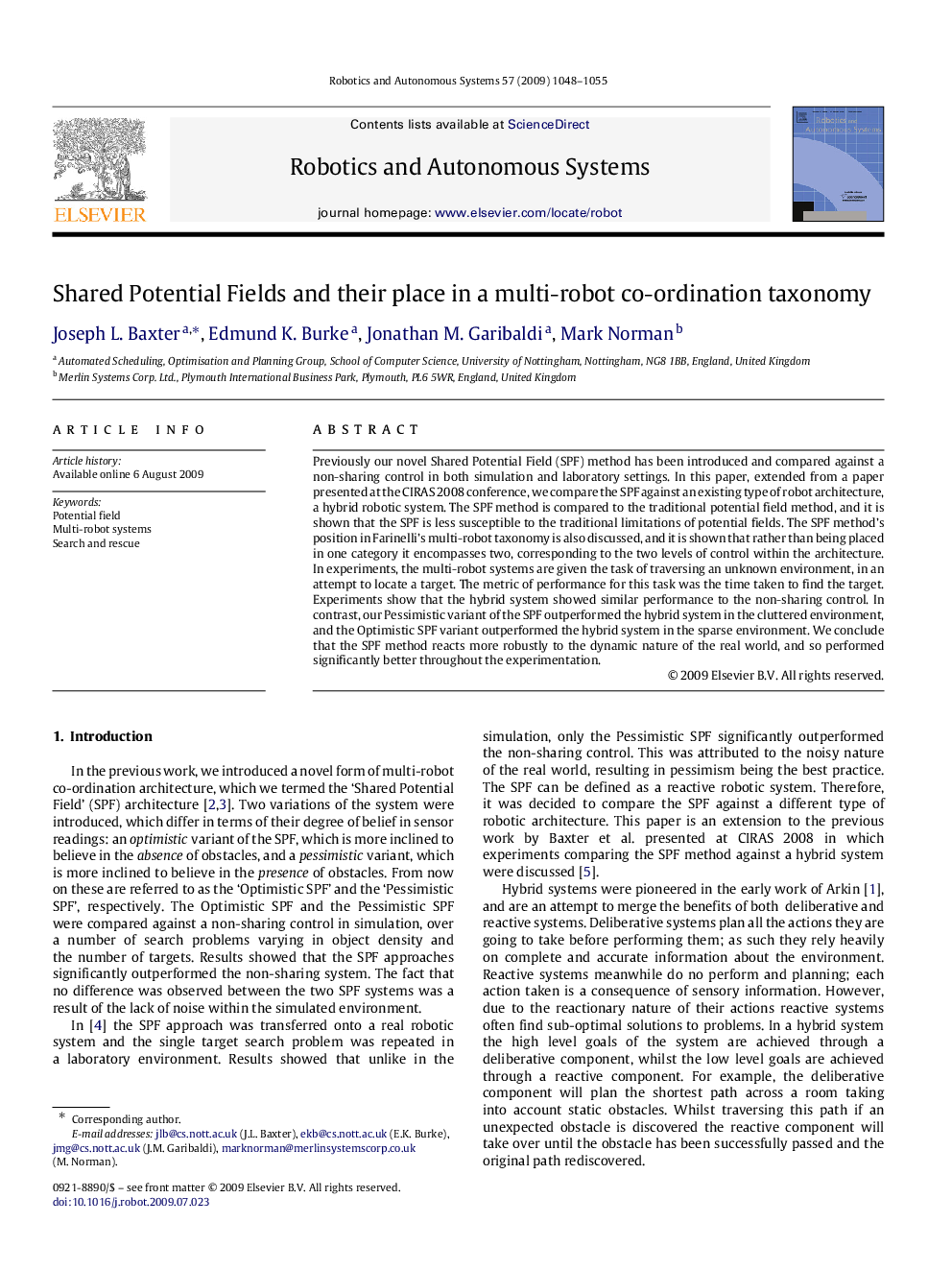| Article ID | Journal | Published Year | Pages | File Type |
|---|---|---|---|---|
| 411686 | Robotics and Autonomous Systems | 2009 | 8 Pages |
Previously our novel Shared Potential Field (SPF) method has been introduced and compared against a non-sharing control in both simulation and laboratory settings. In this paper, extended from a paper presented at the CIRAS 2008 conference, we compare the SPF against an existing type of robot architecture, a hybrid robotic system. The SPF method is compared to the traditional potential field method, and it is shown that the SPF is less susceptible to the traditional limitations of potential fields. The SPF method’s position in Farinelli’s multi-robot taxonomy is also discussed, and it is shown that rather than being placed in one category it encompasses two, corresponding to the two levels of control within the architecture. In experiments, the multi-robot systems are given the task of traversing an unknown environment, in an attempt to locate a target. The metric of performance for this task was the time taken to find the target. Experiments show that the hybrid system showed similar performance to the non-sharing control. In contrast, our Pessimistic variant of the SPF outperformed the hybrid system in the cluttered environment, and the Optimistic SPF variant outperformed the hybrid system in the sparse environment. We conclude that the SPF method reacts more robustly to the dynamic nature of the real world, and so performed significantly better throughout the experimentation.
